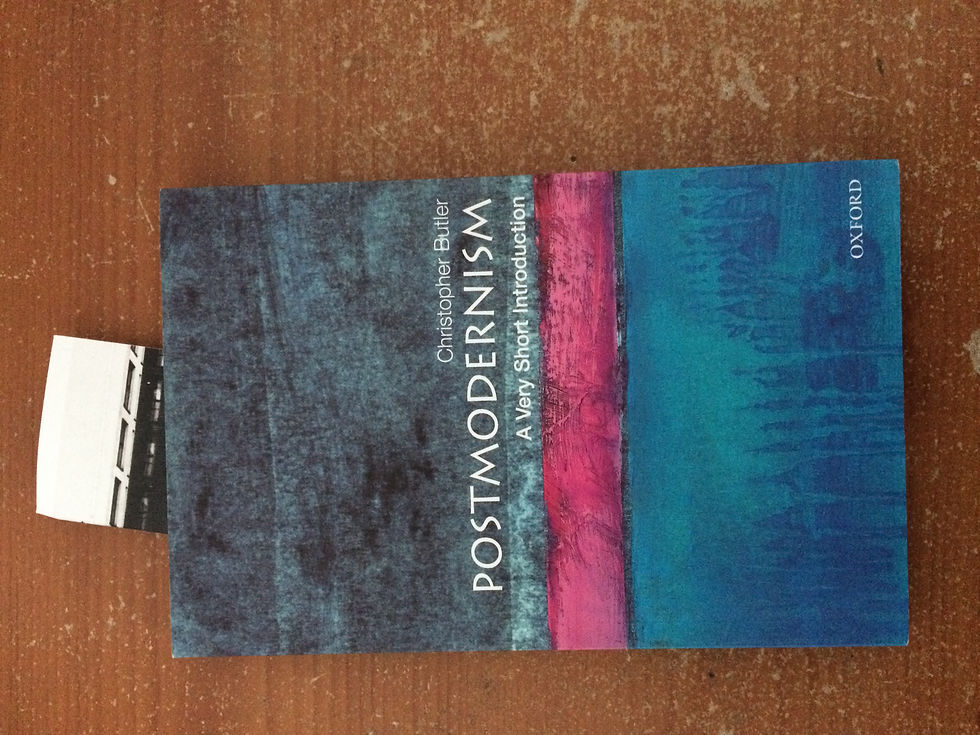Postmodernism: A very short introduction
- Dave Macey

- Oct 26, 2015
- 2 min read

As part of my reasearch for the dissertation I've been reading about postmodernism and I thought that I will document my initial thoughts.
Initially everytjing in postmodernism seems very loose. This is because one of the recurring themes of postmodernism (PM) is to not trust anything and that there are no universal truths. Consequently this means that everything gets questioned, even the theory that there are no universal truths, which initially leads to the enquiry. This is because there is no fundamental truth, it is all a matter of perspective and subjectivity.
Another recurring theme, which comes from there being no universal truths, is the meaning of language. According to PM thought, notably Roland Barthes and Jaques Derrida, there is a system of transference of meaning from the sound of a word to the item it's describing. So for instance, we call an animal a tiger, we know what a tiger looks like and so the knowledge related to tigers is then bought to mind. But there is no reason for that word to describe that animal and the reason for the name is because of social and cultural influences.
So, potentially, this can lead to confusion and misunderstandings because there is no universal truth in the language to describe that animal or any object. Derrida created the theory of Deconstructionism to explain this phenomenon, which to my mind has connections with Decartes, of where evrything is questoned. This means there is an inherent ambiguity because the transference of meaning can be imprecise.
now all art uses a language to communicate between the artist, the artwork and the viewer. This means there is an inherent ambiguity withi the visual language. But another point that PM has introduced, which has led to the blurring and definitions of different art forms, is because art follows a visual language then different mediums can be combined, such as photography and text. But this also means that art is heading in the same direction and so PM influences different art forms and is not restricted to just one. This means that all art can be reduced to a narrative dependant on a common language.
I am finding all this quite interesting and as my dissertation will cover PM is all very very useful. Its almost like PM can be summed up by not thinking outside the box, but by taking the box away all together...



Comments